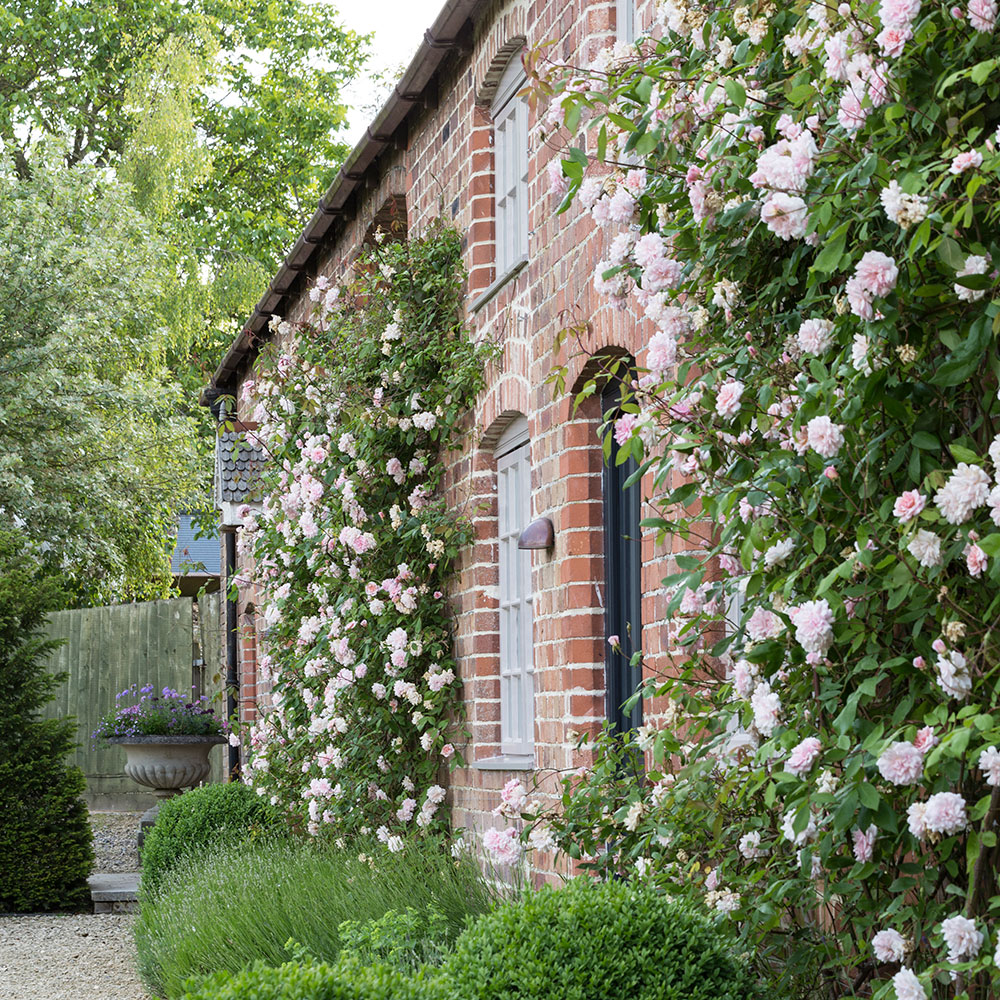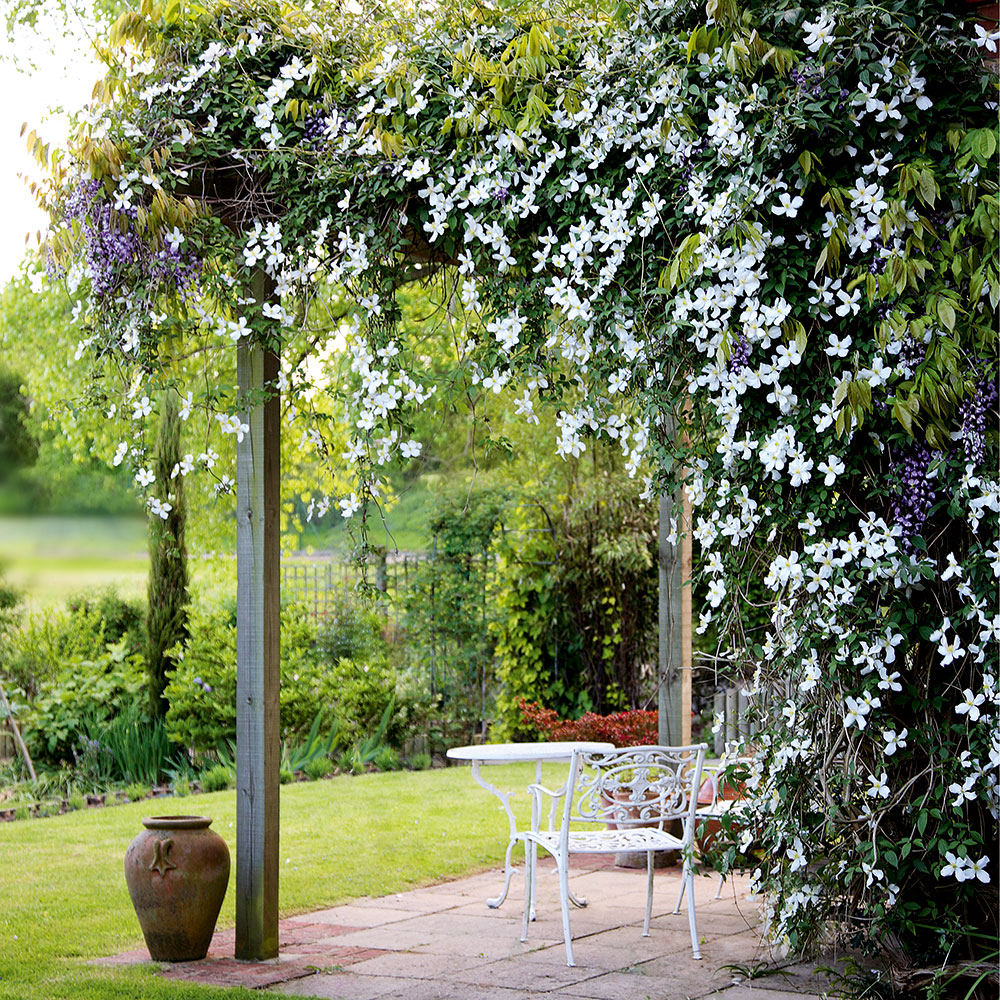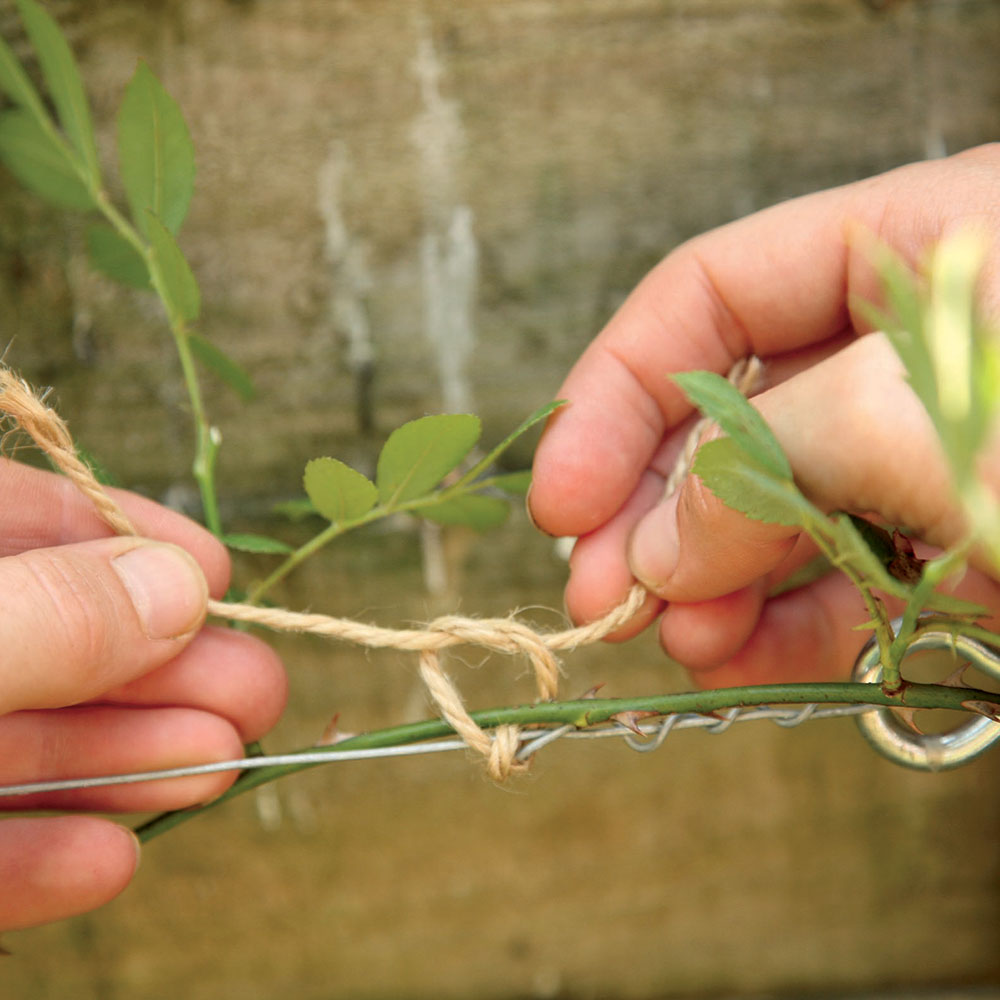How to plant climbing roses, clematis, jasmine and other plants
Create a bright and cheerful garden feature with our guide to planting a screen of climbers

Climbing plants are a great way to cover a fence or wall to give you more privacy and screen off areas that don’t look great. Here's how to plant climbing roses, jasmine and other plants and transform your garden this summer.
See more of our garden ideas.
How to plant climbing roses and more – what you'll need

- Compost
- Pots of climbing roses or other plants
- Thick wooden battens
- Wooden trellis
- Garden twine
- Bedding plants
1. Do your homework
Not all plants are suitable for climbing, and of those that do, some will be heavier than others. Roses, clematis, honeysuckle and jasmine are all good choices, but will need a decent framework to support them.
If you opt for roses, certain varieties of climbing rose may be more suitable for your needs than others, according to Frosts Garden Centre. As an example 'The Generous Gardener' variety is ideal for adorning an arch, while miniature climbers such as 'Warm Welcome' are great for tight spaces.
2. Build the support
Most climbers need something to cling to. A wooden trellis is a great option – fit thick battens to the wall or fence surface, and then screw the trellis to this (you want it a couple of inches from the surface). The bottom of the trellis should be around 30cm from the soil level, or it will rot.
A decorative frame is also another option, carefully putting it over the potted climber before following step 5 below.
3. Prepare the plants
Give your plants a good watering, then take the out of their pots. Carefully tease out the roots so they aren't clumped in a big ball. This will encourage them to explore the new soil they're planted into.
Sign up to our newsletter for style inspiration, real homes, project and garden advice and shopping know-how
Try plants indoors, too! How to make a living plant wall
4. Arrange the plants

Dig a hole twice the size of the pot for planting, at least 15cm from the wall or fence (the soil right next to the fence or wall doesn’t get as much rain so can be very dry). Dig compost into the base of the hole. Remove the pot and position the plant – along with its supporting cane – in the hole, leaning onto the support.
For most climbers, the top of the root ball should be at the same level as the top of the soil. Climbing roses should have their 'graft union' (the part where the stem of the rose plant is grafted onto its roots) at root level, too. Clematis (shown above) are an exception, and should be planted 8cm below the soil level.
Clematis can actually be planted alongside your climbing rose as a companion plant, to add colour and vivacity to your garden display, bearing in mind the considerations above.
Finally refill the planting hole with a mixture of garden soil and compost, firming it up as you go.
5. Attach the climbers to the support

Spread out the stems and tie them onto the support with twine. Water well and keep well watered during the plant’s first year.
6. Prune your climbers regularly

More gardening tips: How to make an Easter terrarium
Watch out for overcrowded, diseased or damaged stems on your climbers. If you spot any, give them a quick prune. You should also prune back trailing stems annually and thin out new growth.
If you’re unsure of the best time of year to do this for your chosen climber, check with your local garden centre. However, the best to prune climbing roses is late autumn or early winter.

Amy Cutmore is an experienced interiors editor and writer, who has worked on titles including Ideal Home, Homes & Gardens, LivingEtc, Real Homes, GardeningEtc, Top Ten Reviews and Country Life. And she's a winner of the PPA's Digital Content Leader of the Year. A homes journalist for two decades, she has a strong background in technology and appliances, and has a small portfolio of rental properties, so can offer advice to renters and rentees, alike.